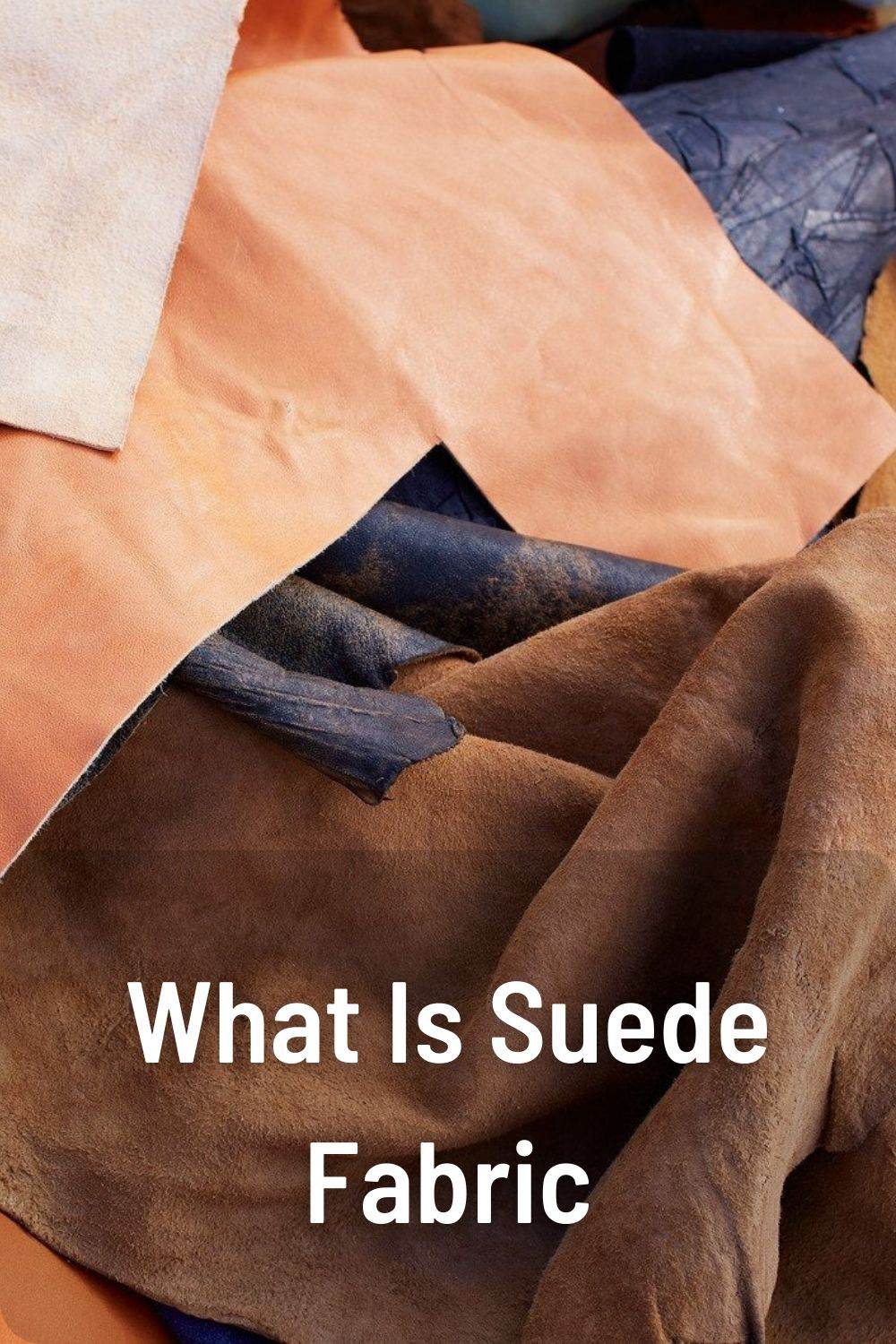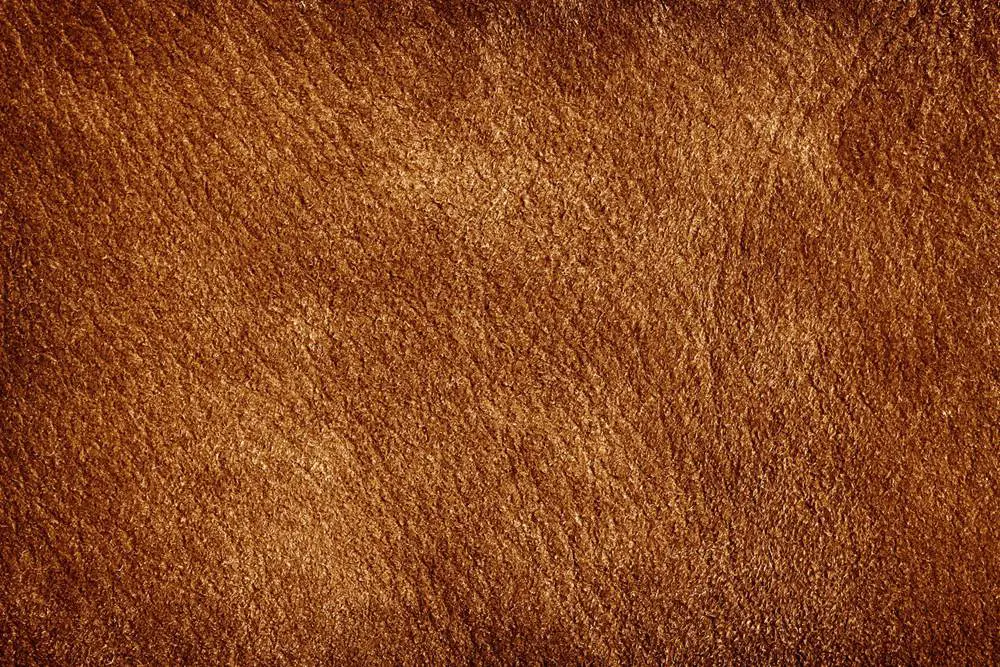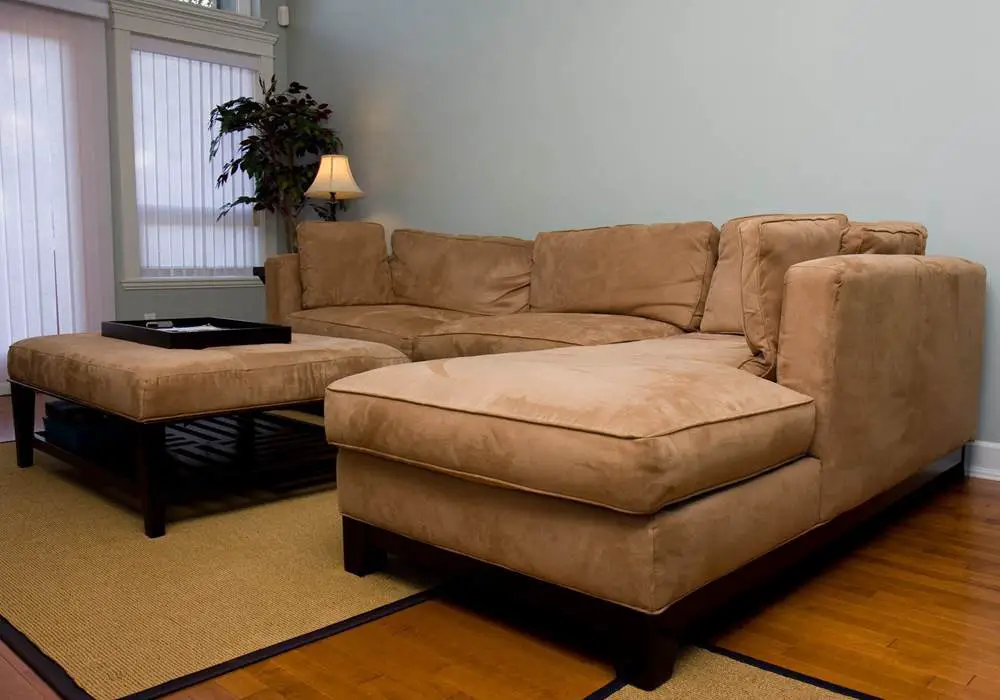
Suede is a type of leather with a distinctive soft, brushed finish. It is made from the underside of animal skins, which results in a velvety nap. Suede has become a popular material for clothing, shoes, accessories, and home furnishings.
In this comprehensive guide, we will cover everything you need to know about suede fabric, including:
Table of Contents
What is Suede

Suede is a type of leather made from the underside of the skin of animals like sheep, goats, pigs, cows, deer, and reindeer. The underside of the skin is called the corium layer. This layer contains small fibers that give suede its soft, velvety texture.
The word “suede” comes from the French “gants de Suède”, meaning “gloves from Sweden”. In the 19th century, suede gloves were imported from Sweden to France and became popular. The term eventually came to describe the fabric.
Suede has a nap, which means the fibers rise up from the surface. It feels smooth when brushed in one direction and resistance when brushed in the other direction. This is what creates the soft, velvety texture.
How Suede Is Made
Suede is made using a split leather process. The steps are:
- The thick hides of animals are split horizontally into 2 or more layers.
- The top grain layer is used to make leather. The inner layer is used to make suede.
- The inner layer is soaked, purified, and treated. This removes the oils and fats.
- The inner layer is run through rollers with an abrasive surface. This brings up the nap by roughing up the fibers.
- The suede is colored using water-based dyes or pigments.
- The suede is brushed to raise the nap even more. This gives it the velvety texture.
- It is treated with a finish to prevent stains and damage.
- The suede is inspected, conditioned, and packaged.
This labor-intensive process creates the soft, napped texture that makes suede unique.
Types of Suede
There are different types of suede fabric, categorized by the part of the animal skin used:
- Genuine suede – Made from the corium layer of the entire hide. It is the most common and affordable type of suede.
- Nubuck suede – Made from the top grain leather layer. It has a finer nap and more velvety feel than genuine suede. It is more expensive.
- Split suede – Made from the deeper or flesh split layer. It is thick but has a less defined nap. It is the lowest quality and cheapest type of suede.
Suede can also be categorized based on the animal source:
| Animal | Characteristics |
|---|---|
| Lamb | Very soft, lightweight, supple |
| Goat/Kid | Fine grain, durable, good drape |
| Deer | Soft, a bit sturdier than lamb |
| Pig | Affordable, not as soft as sheep |
| Calf | Smooth and soft, small pore structure |
| Reindeer | Extremely soft and supple, lightweight |
The animal source affects the softness, durability, grain, and price of the suede fabric.
Properties of Suede
Suede has unique properties that make it a popular material for clothing and accessories:
- Softness – The napped surface feels extremely smooth, soft, and velvety. Suede has more give and flexibility than regular leather.
- Warmth – The nap acts as insulation to retain heat. Suede jackets and coats provide warmth without heavy weight.
- Absorption – The open pores readily absorb moisture, oils, and conditioners. It is naturally water-resistant but can be treated for more protection.
- Comfort – Suede garments have a supple hand that drapes nicely over the body. The fabric moves with you.
- Appearance – The nap reflects light differently, creating depth and rich color. Embossing effects can add visual interest.
- Lightweight – Suede is lighter than regular leather due to the thin split layer it is made from. This makes it suitable for all seasons.
- Durability – High-quality suede is quite durable. With proper care, it lasts for many years. It may scuff but does not crack easily.
Uses and Applications of Suede

The soft, sensual properties of suede make it ideal for:
Clothing
- Jackets
- Coats
- Blazers
- Skirts
- Dresses
- Tops
- Gloves
- Hats
- Boots
- Shoes
- Purses
- Backpacks
- Wallets
Upholstery
- Chairs
- Sofas
- Headboards
- Ottomans
- Pillows
Accessories
- Jewelry
- Bags
- Cases
- Watch straps
- Notebook covers
Automotive
- Seat covers
- Steering wheel covers
- Dashboard covering
- Car interiors
Suede brings warmth, texture, luxury, and versatility to anything it is used for. The fabric continues to be popular for clothing, shoes, accessories, and home décor.
Suede vs Leather vs Nubuck
Suede is often compared to leather and nubuck. Here are the key differences:
| Suede | Leather | Nubuck | |
|---|---|---|---|
| Made from | Inner corium layer | Outer grain layer | Outer grain leather |
| Texture | Napped, velvety | Smooth | Lightly napped |
| Durability | Good | Excellent | Very good |
| Water Resistance | Moderate | Excellent | Good |
| Care | High maintenance | Low maintenance | Moderate maintenance |
| Price | $$$$ | $$$ | $$$$ |
While suede, leather, and nubuck are all made from animal hides, they have distinct textures, properties, and price points. Suede is softer and more delicate than rugged leather, but requires more care. Nubuck has a fineness between suede and leather.
Caring for Suede
Suede needs special care due to the delicate fibers on the surface. Here are some tips for keeping suede looking its best:
- Use protective sprays to repel stains and water. Apply thinly and let dry fully. Reapply every few months.
- Avoid getting suede wet. Blot up spills immediately with an absorbent cloth. Let suede dry away from direct heat.
- Use a suede brush gently in one direction to lift the nap. This restores the texture.
- Remove dirt and stains carefully with a suede eraser bar. Rub gently in a circular motion.
- Store suede in breathable, fabric bags. Avoid plastic bags which don’t allow it to breathe.
- Take suede items to a specialty cleaner when necessary. Avoid commercial dry cleaning.
With proper protective sprays and gentle cleaning, suede can look fabulous for many seasons. Take care to keep the nap smooth and lush.
Sustainability of Suede
Suede is made from animal by-products from the meat industry, so it utilizes materials that would otherwise go to waste. Using every part of the animal is a sustainable practice.
However, the tanning process uses harsh chemicals that can pollute waterways and land. Newer methods like vegetable tanning use safer natural tannins from tree bark. This makes suede production more eco-friendly.
Suede is also biodegradable, unlike plastics-based synthetics. It does not pile up in landfills. Upcycling suede into new products is a growing sustainable trend.
Consumers play a role in sustainability. Choosing high-quality suede that lasts for years reduces waste. Caring for it properly extends its lifespan. Purchasing second-hand vintage suede gives it a new life.
Conclusion
Suede is a luxurious, versatile material made from the underside of animal skins. The delicate napped surface gives it an unparalleled soft, sensual feel. Suede brings warmth and texture to clothing, shoes, accessories, upholstery, and car interiors. It requires gentle care to maintain the delicate nap. Suede has good sustainability credentials as long as tanning uses eco-friendly processes. With proper maintenance, high-quality suede can be treasured for many years. This sensuous fabric will continue to be prized for its beauty and comfort.
Frequently Asked Questions
What animals is suede made from?
Suede is most commonly made from the hides of sheep, goats, pigs, cows, deer, reindeer, and calves. The type of animal affects the softness, durability, grain, and price. Lamb, deer, and calf suede are very soft and supple.
Is suede leather?
Suede is a type of leather. It is made from the inner split layer of the animal hide, whereas regular leather is made from the outer grain layer. Both come from animal skins but suede has a napped texture while leather has a smooth finish.
Is suede durable?
High-quality suede is quite durable if cared for properly. It may scuff or mark more easily than regular leather, but does not crack or peel easily. With protective treatments and gentle cleaning, suede can last for many years without losing its texture.
How do you clean suede?
Use a protective spray to prevent stains. Gently brush with a suede brush in one direction. Blot spills quickly with an absorbent cloth. Use a suede eraser bar to gently rub out dirt or stains in a circular motion. Take to a specialty cleaner if needed. Avoid commercial dry cleaning.
Can you get suede wet?
Suede can be damaged by getting wet. Water spots may form as it dries. It is best to spray suede with a water repellant treatment. Blot any moisture quickly with an absorbent cloth. Allow wet suede to air dry away from direct heat to prevent hardening or cracking.